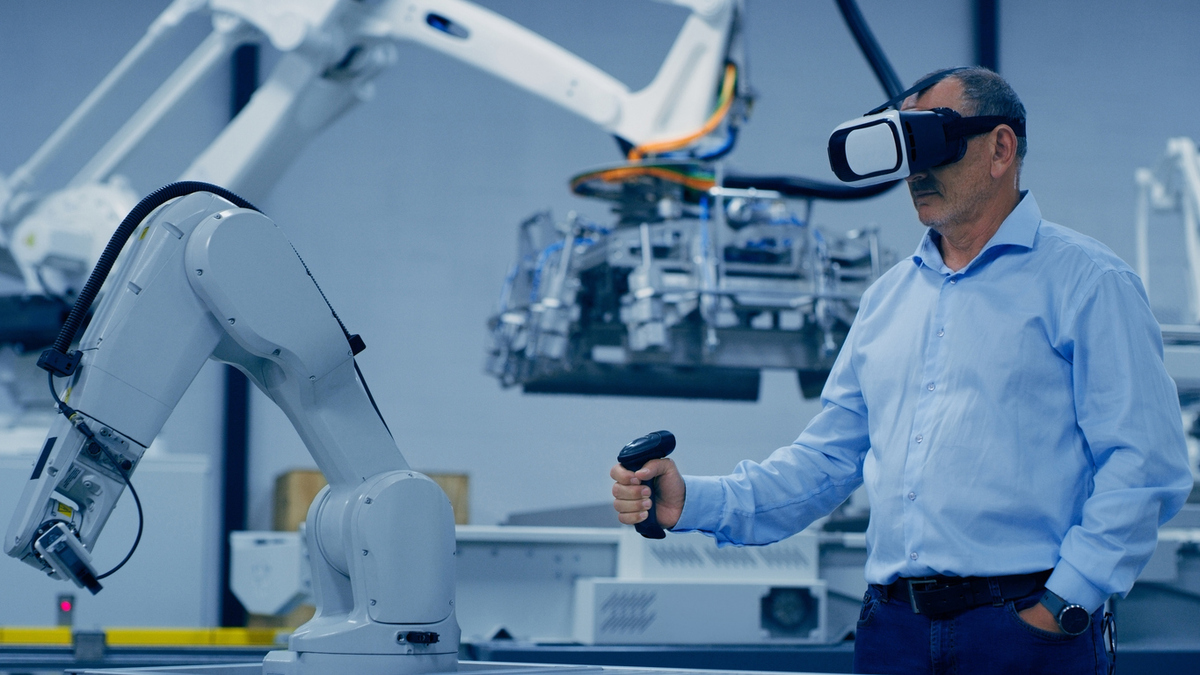Harnessing AI for mixed reality
Jeremy Swinfen Green outlines the many ways that artificial intelligence is transforming the world of virtual and augmented reality

In the ever-evolving landscape of business technology, the fusion of artificial intelligence (AI) and mixed reality (MR) stands out as a transformative force.
Mixed reality blends the physical and digital worlds. It involves people having a live view of their physical environment which is augmented by computer-generated sensory input, such as sound, visuals (graphics, animations, text) and even smell and touch. In other words, it involves digital information overlaid on the real world via a computer screen (typically a smartphone), a headset, smart glasses or even a haptic suit.
AI can enhance the experiences generated by mixed reality applications by enhancing the computer-generated sensory input, making it more relevant to the person experiencing it or the situation they find themselves in. As industries seek innovative solutions to streamline operations and enhance customer experiences, the integration of AI into MR applications offers a multitude of profitable opportunities for businesses.
Mixed reality has already demonstrated its potential across various sectors, from manufacturing and healthcare to retail and education. However, the true power of MR lies in its ability to leverage AI algorithms to augment and enrich the user experience in new and surprising ways.
Personalised customer experiences
In the realm of retail and marketing, AI-enhanced MR applications enable personalised customer experiences that transcend traditional boundaries.
Increasingly retailers are using MR to enhance customer experiences. For example, customers can “see” what they look like wearing particular clothes or make up. They can “experience” driving a car without leaving the showroom. They can evaluate room designs based on different colours, lighting and the placement of furniture. And they can decide whether a particular customisation, perhaps to a pair of trainers, is really what they want to choose.
By analysing customer preferences and behaviour patterns in real time, AI algorithms can tailor product recommendations and immersive shopping experiences within the MR environment. This level of personalisation fosters deeper engagement and strengthens brand loyalty, ultimately driving sales and revenue growth.
Training and simulation
Training and simulation are critical components across various industries, ranging from aviation and healthcare to construction and automotive.
AI-powered MR applications revolutionise training methodologies by creating immersive, lifelike simulations that adapt to the user’s actions and responses in real time. This is particularly important when training people to operate in dangerous or physically challenging environments. By letting people practice actions outside the environment, they can enable them to develop the muscle memory and situational awareness that will allow them to move to the real environment more safely.
Through AI-driven mechanisms that use machine learning to deliver ever-better feedback, trainees receive personalised guidance and performance evaluations, accelerating the learning process and improving skill retention. And because training is taking place in a simulated environment, it is often possible to save on the costs of operating machinery.
Efficient remote collaboration
With the rise of remote work and distributed teams, efficient collaboration tools have become indispensable for modern businesses.
AI-powered MR platforms offer immersive environments where remote team members can collaborate seamlessly, regardless of geographical boundaries. By enabling a more realistic virtual environment (where perhaps daylight levels change for individual team members based on their location), people will naturally engage more closely with team discussions and activities.
In addition, by leveraging AI-driven natural language processing together with gesture and emotion recognition technologies (subject of course to any constraints created by compliance with the EU’s AI act), participants can interact intuitively within the MR space, with a better understanding of the team members they are collaborating with. This combination of AI and MR can foster increased creativity, innovation, and teamwork.
Optimised operations and predictive maintenance
In industries with complex machinery and equipment, such as manufacturing and energy, a combination of AI and MR can maximise operational efficiency. For instance, in manufacturing, AI-powered MR systems can overlay real-time production data onto physical machinery, allowing operators to monitor performance and identify potential efficiency or safety issues instantaneously.
Predictive maintenance is also important. AI-powered MR applications analyse sensor data in real-time to predict potential equipment failures before they occur. By overlaying predictive maintenance alerts onto physical assets within the MR environment, maintenance technicians can proactively address issues, optimising asset performance and reducing maintenance costs.
Enhancing MR with AI
The potential of AI-enhanced MR applications is immense. However, there are several challenges that warrant attention. Privacy and data security remain paramount, particularly concerning the collection and use of user data within MR environments. Additionally, ensuring interoperability and seamless integration with existing systems and hardware poses technical hurdles that must be addressed.
The key principles of operating AI will apply to any AI-enhanced mixed reality system. These include transparency (people involved must know they are dealing with machine-generated decisions), agency (people involved must be able to override the AI elements of a process if necessary), and accountability (any unfortunate instances cannot be attributed to the AI – there must always be a human who is accountable for AI-generated decisions).
The convergence of AI and mixed reality represents a shift in how businesses conceptualise and leverage digital technologies. By harnessing the power of AI algorithms, businesses can unlock new opportunities for innovation, efficiency and competitiveness across various sectors.
As AI continues to evolve, so too will its transformative impact on mixed reality applications, shaping the future of business in the digital era.

Jeremy Swinfen-Green
Most Viewed
Winston House, 3rd Floor, Units 306-309, 2-4 Dollis Park, London, N3 1HF
23-29 Hendon Lane, London, N3 1RT
020 8349 4363
© 2025, Lyonsdown Limited. Business Reporter® is a registered trademark of Lyonsdown Ltd. VAT registration number: 830519543





